Baba family documents (Babakemonjo)
Update date: June 27, 2017
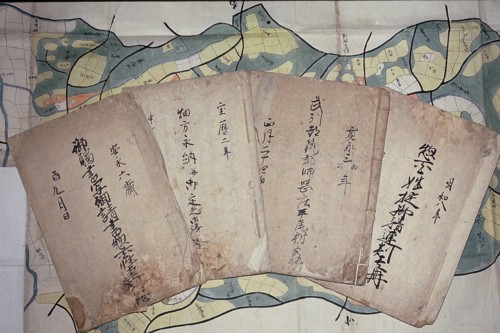
Baba family's ancient documents
The Baba family in Hirao owns 50 old documents from the Edo period. The contents of the documents are as follows: Land survey book , Boundary dispute Ino's lawsuit documents, Imperial edict , Village rules The documents include village maps and other valuable historical materials that give us an insight into the state of Hirao Village in the Edo period and the lives of farmers at the time. Kanei From 1626 Genji In the 239 years up to 1865, the " Water register of Hirao village, Shiokasho, Tsuzuki County, Bushu " is currently the oldest early modern document in the city. Among the 50 ancient documents, we will introduce some particularly important basic historical documents. (The Baba family also preserves modern historical documents from the Meiji period onwards.)
Water register of Hirao village, Shiokasho, Tsuzuki County, Bushu (Baba family documents 1)
Kanei It was created in 1626 and remains in the city. Land survey book It is the oldest of the 1990s. It contains information on famous places (location names), Rank Attached hair( Ueda , Nakata , Shimoda etc), acreage (Land 1 Brush (area of petitioner (cultivator or holder of cultivation rights), etc.
Regarding the submission of a bill of approval by the village peasants (Baba Family Documents 15)
In the middle of the Edo period, people illegally entered other people's forests in search of fertilizer sources, and took fallen leaves and other materials. undergrowth In response to this, there were many cases of theft within the village. Village rules The system of mutual supervision among farmers was strengthened. Horeki era It was created in 1764, and includes "not only standing trees and fallen leaves adjacent to residential areas and fields, but also forests and fields. Common land of Standing tree The village rule states that "it is forbidden to cut the grass without permission, even down to the fallen leaves," and severe penalties are imposed for any violation of this rule.
Katahira Village, Kosawa Village, Hirao Village, Yodo County, Bushu Province (Baba family documents 4)
Villages in a certain area may share forests and fields, and this land Common land As agricultural productivity increased, so did its use, which often led to disputes. Disputes over common land also occurred in the villages of Inagi, but the most notable was the dispute between Hirao Village, introduced in this document, and the neighboring villages of Katahira and Furusawa. Boundary dispute The villagers of Katahira and Furusawa are cultivating the fields of Hirao Village. Membership Use A controversy arose as a result. Rating office The court confirmed both sides' claims, investigated the relevant documents, and handed down its ruling. The ruling stated that "the new boundary setting claimed by Hirao Village is not convincing, so the two mounds that have existed since ancient times ( Nyujozuka and Thirteen mounds The border will be the line passing through the village of Hirao. Join "You must not do that." Sadayoshi This document, created in 1686, has a diagram showing the borders on the front and the details of the ruling on the back. Letter of Judgment And " Court decision drawing "It is called.
Hirao Village Illustration (Baba Family Documents 44 and 50)
Two illustrations of the entire Hirao village remain. Although the year of creation is not recorded, it is thought to be a historical material belonging to the Edo period. Rice fields, fields, forests, houses, shrines and temples are depicted in detail.
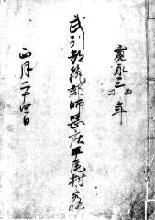
“Water Book of Hirao Village, Morookasho, Tsuzuki District, Bushu”
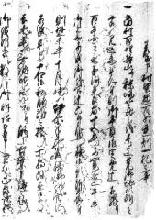
``Submitting one bill for a series of peasants in village Kenme''
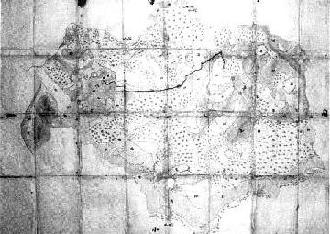
"Illustration of Jurisprudence" (drawing)
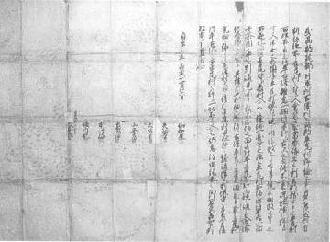
"Illustration of Jurisprudence" (endorsement)












